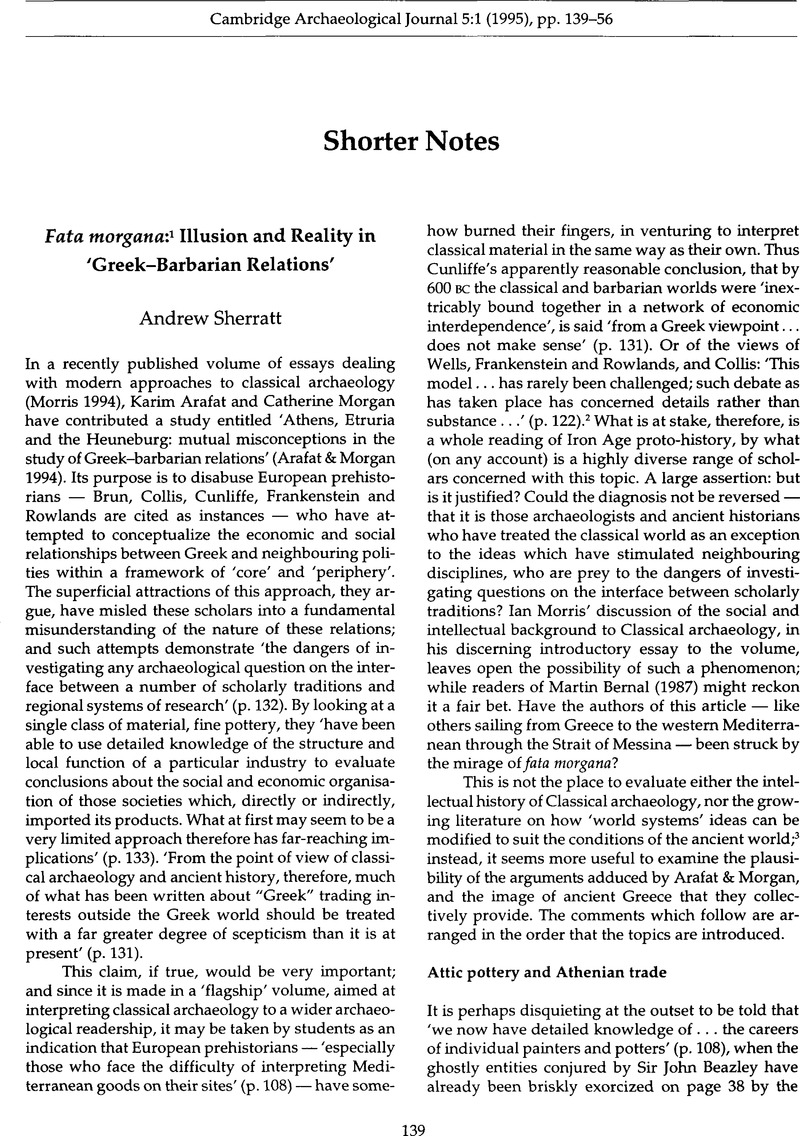Crossref Citations
This article has been cited by the following publications. This list is generated based on data provided by Crossref.
Easton, D.F.
Hawkins, J.D.
Sherratt, A.G.
and
Sherratt, E.S.
2002.
Troy in recent perspective.
Anatolian Studies,
Vol. 52,
Issue. ,
p.
75.
Armit, Ian
and
Grant, Philomena
2008.
Gesture politics and the art of ambiguity: the Iron Age statue from Hirschlanden.
Antiquity,
Vol. 82,
Issue. 316,
p.
409.
Thurston, Tina
2009.
Unity and Diversity in the European Iron Age: Out of the Mists, Some Clarity?.
Journal of Archaeological Research,
Vol. 17,
Issue. 4,
p.
347.
GALATY, MICHAEL L.
2011.
World-Systems Analysis and Anthropology: A New Détente?.
Reviews in Anthropology,
Vol. 40,
Issue. 1,
p.
3.
Wells, Peter S.
2011.
European Prehistory.
p.
405.
Brun, Patrice
and
Chaume, Bruno
2018.
La protohistoire de la France.
p.
373.
Hodos, Tamar
2020.
The Archaeology of the Mediterranean Iron Age.



